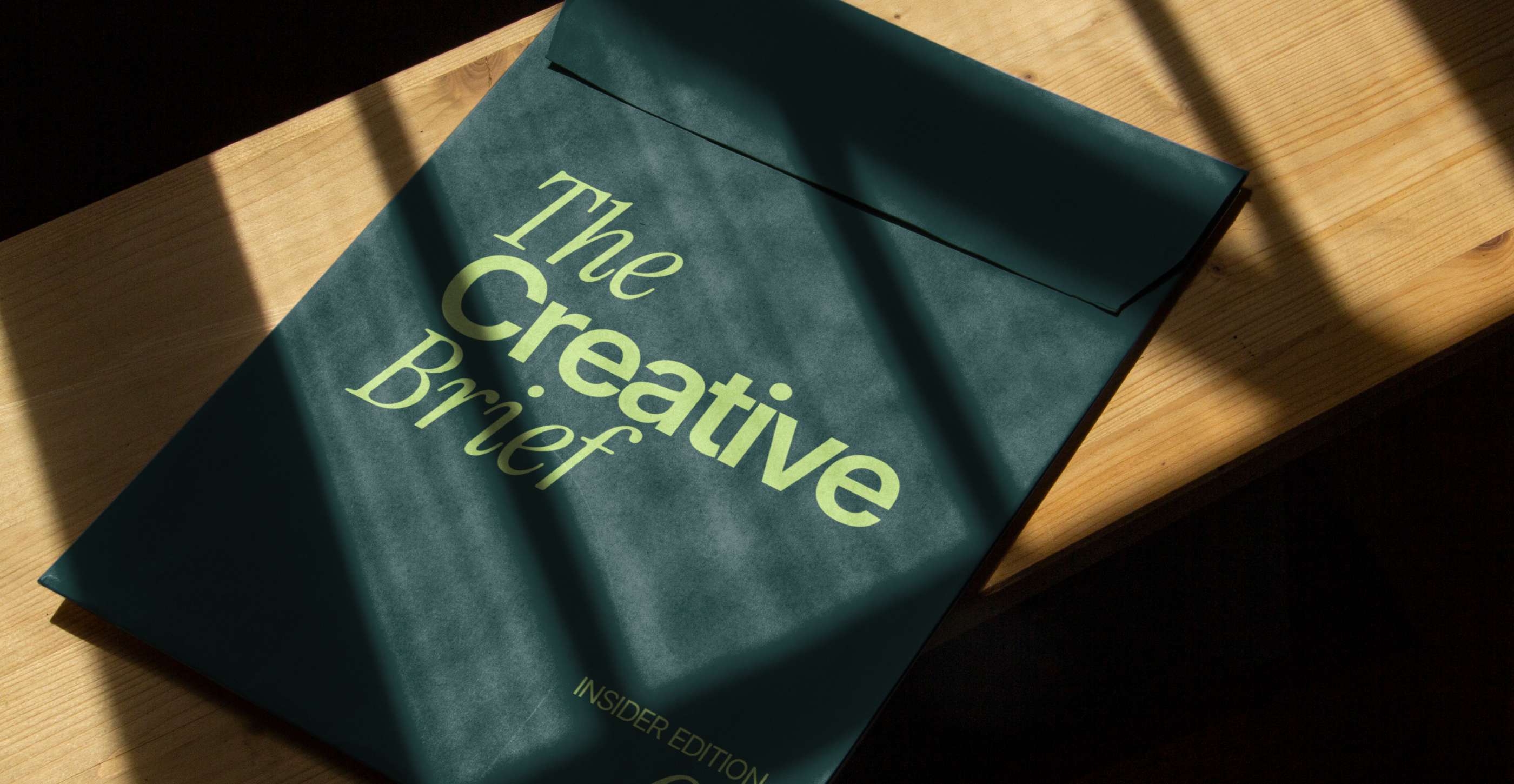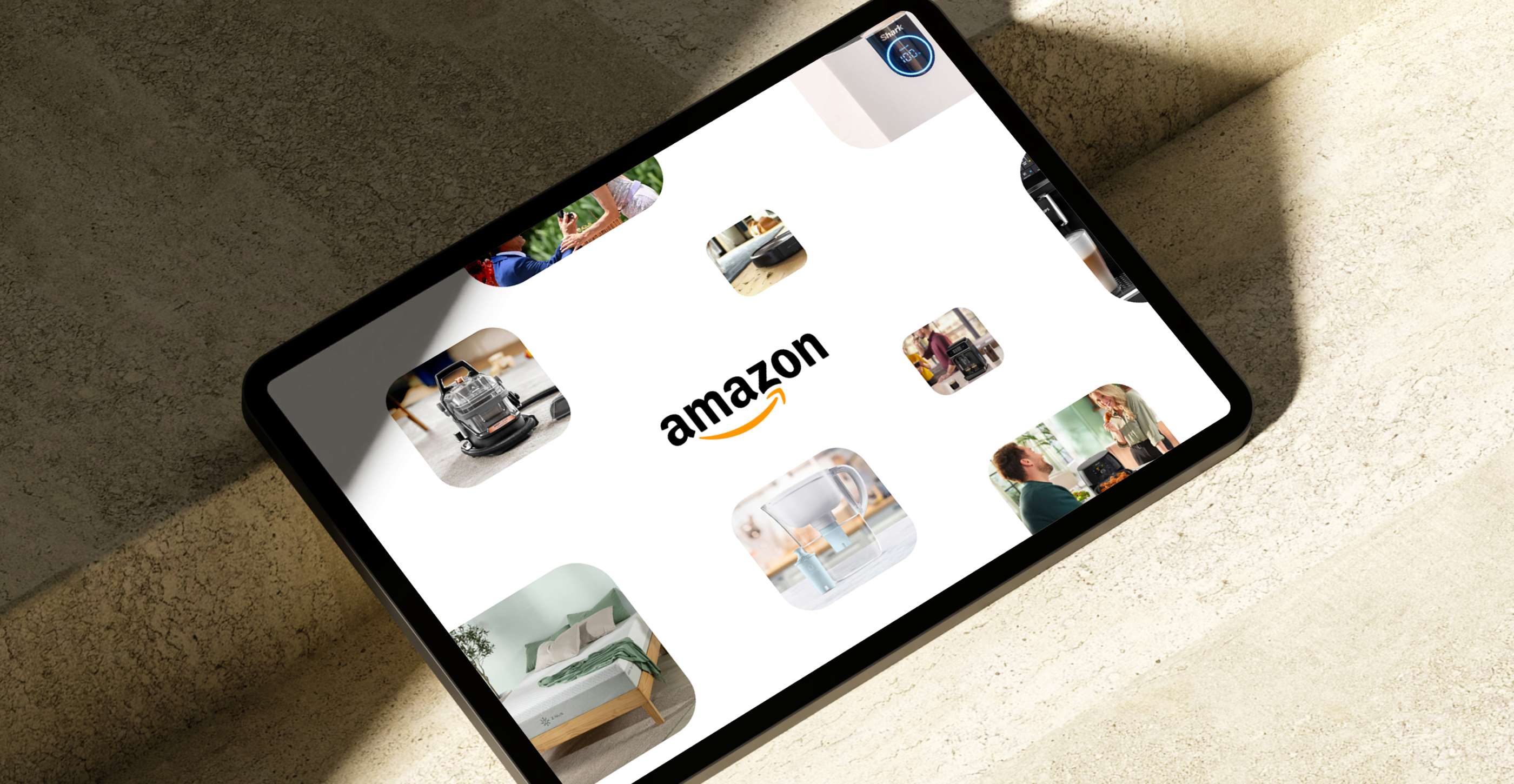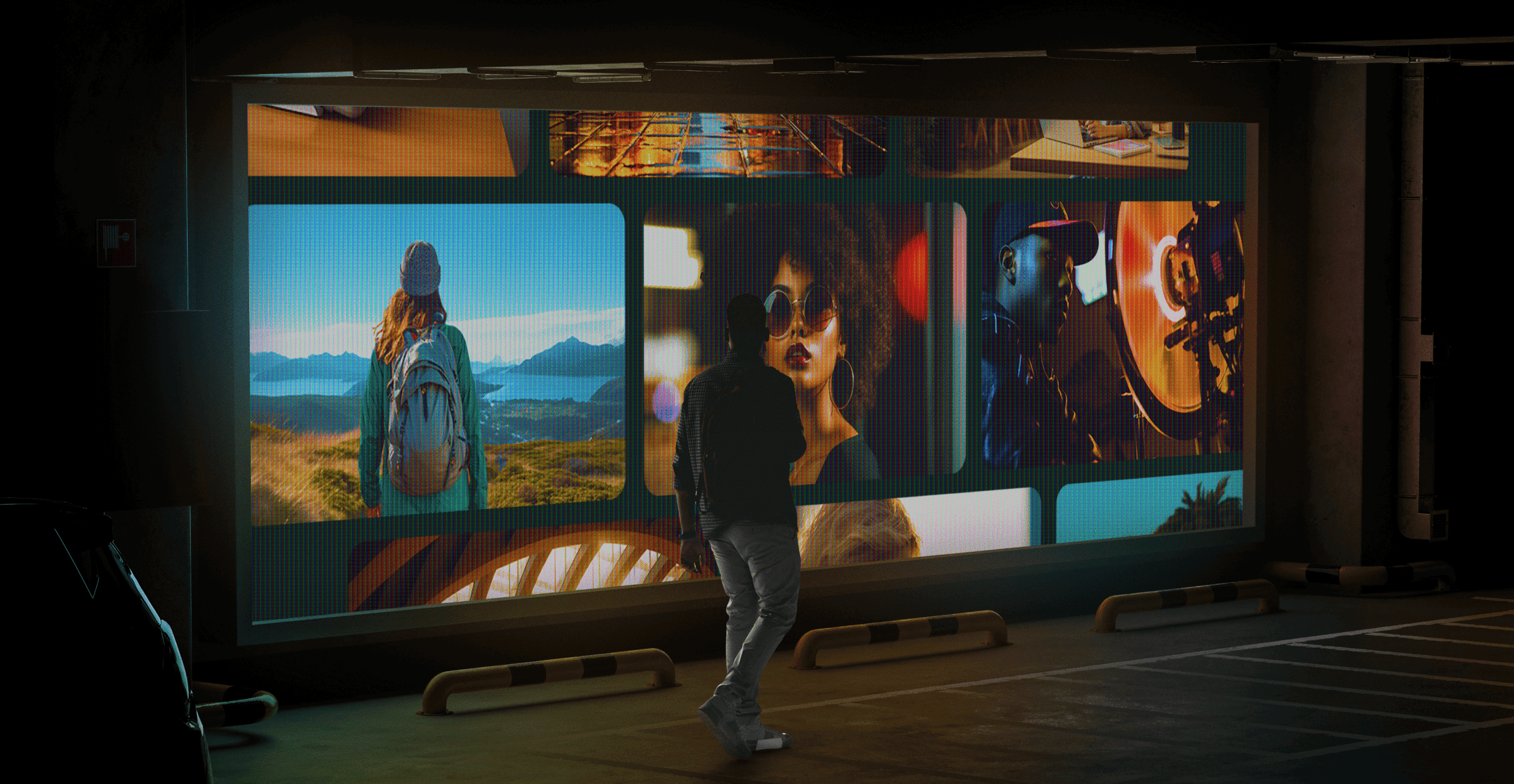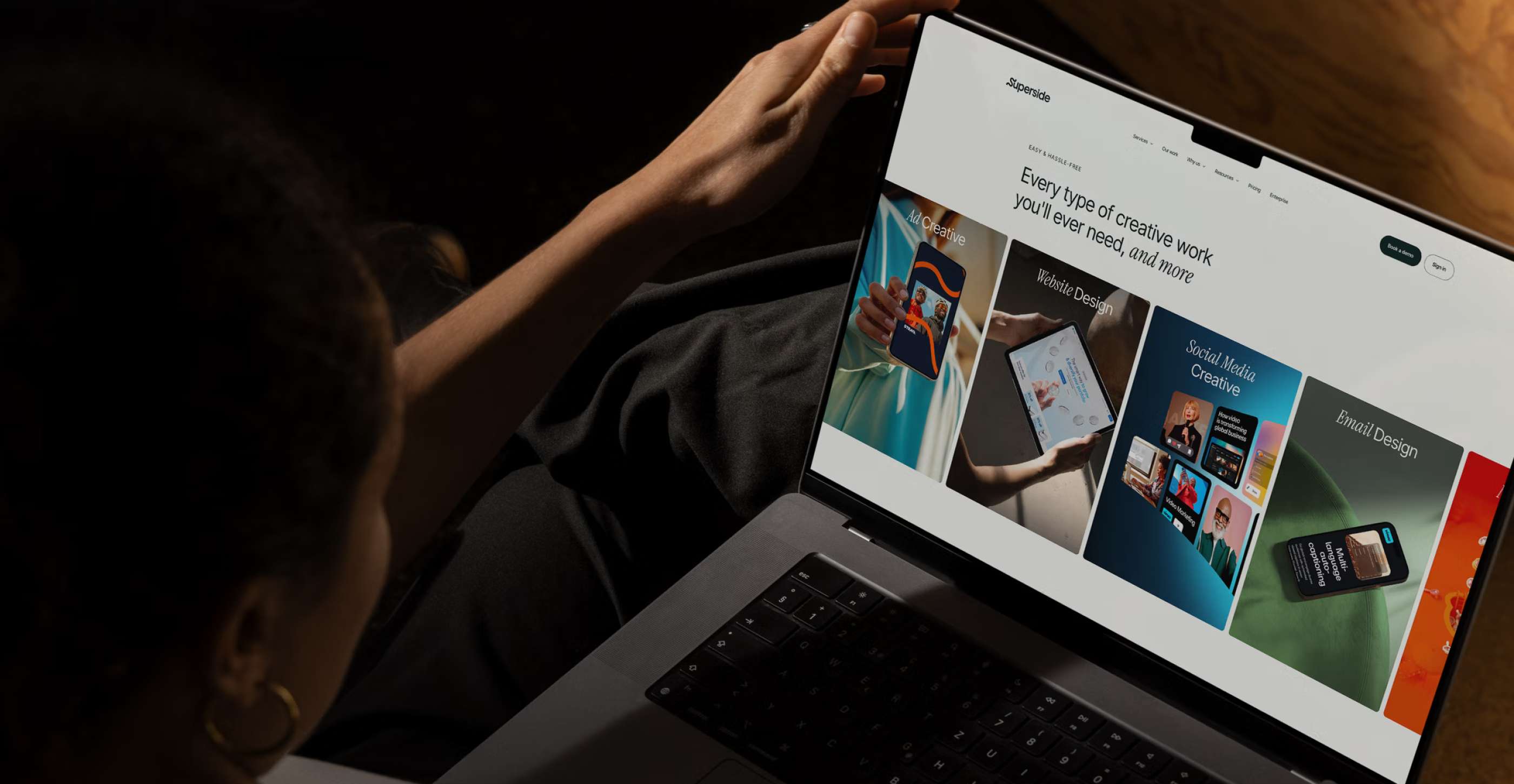5 tips for standout creative briefs without slowing down production

Bad briefs kill efficiency and creativity. Good ones bring teams, ideas and campaigns to life. Learn to craft a great creative brief and develop a robust briefing system that boosts productivity, improves the creative process and keeps production teams and other key stakeholders smiling.
With the creative services industry under strain, Creative teams today don’t have time to waste on unclear briefs.
Yet, they’re everywhere.
Unclear creative briefs are more than just annoying, though. They slow production, as team members must spend extra time clarifying important elements such as the creative project goals, the client’s vision, the target audience, key messaging, deliverables, calls-to-action (CTAs) and more.
Where multiple stakeholders and large-scale campaigns are involved, chasing these missing details becomes even more time-consuming. Creative projects quickly lose momentum, and creative teams lose their enthusiasm. 😖
If this scenario sounds familiar, take heart: Developing effective creative briefs is easier than you might think, especially with the partnerships, technology and creative support solutions now available.
We at Superside know the marketing landscape inside and out and specialize in working closely on creative briefs, streamlining workflows, and unlocking exceptional creative at scale.
We’re confident we’re your best bet, but we also want to equip you with information on creating high-impact briefs, insights into their importance in enterprise marketing and common pitfalls to avoid.
Ready to get briefed? Let’s dive in.
Why creative briefs matter in enterprise marketing
An effective creative brief, an essential tool for any marketer, has some serious job responsibilities.
A good creative brief should set and manage expectations, streamline processes and empower creative teams to produce work that’s not only visually compelling but strategically aligned with business objectives, brand personality and the business’s key message.
In other words, good briefs help teams produce creative that performs.
Given the importance of the creative brief, it’s alarming that only 10% of creative professionals feel they’re briefed well.
To add insult to injury, 78% of creatives report they can’t keep up with the ever-increasing demand for work.
Clearly, there is no room for inefficiency. Creative support solutions—such as comprehensive, structured briefing systems—have never been more important.
When done right, a creative brief is a powerful support tool that:
- Ensures alignment between all stakeholders and various teams, such as design, copy, marketing operations and leadership.
- Clarifies creative project goals, target audience, core message, brand guidelines and timelines.
- Streamlines creative operations and processes, keeping everyone on the same page.
- Boosts productivity.
- Reduces inefficiencies and costs, thanks to fewer revisions.
- Enhances brand consistency.
- Drives higher-quality results.
A poor brief, in turn, can cause confusion, frustration, delays, missed deadlines and costly revisions.
Common pitfalls in the creative briefing process
Few things can derail the briefing process—and lead to poor deliverables and campaign outcomes—as quickly as these common challenges.
Catalina Jimenez, Creative Project Manager Lead at Superside, shares her thoughts with us:
I think a good way to identify bottlenecks is by asking or evaluating why there’s resistance or a lack of clarity in brief creation. Sometimes it’s a lack of expertise in a service, a lack of time to structure the brief, or confusion caused by too many stakeholders being involved.

- Too many stakeholders. Involving an excessive number of stakeholders in the briefing process often leads to conflicting opinions, causing confusion among creative teams. This situation can dilute focus and the campaign’s key message, resulting in compromised and less impactful deliverables.
- Lack of standardization. Without consistent formats and brief templates, key information may be left off a brief, leading to misalignment and inefficiencies.
- Lack of clarity. Briefs without clear project objectives can leave creative teams uncertain about what they should achieve. This ambiguity often results in deliverables that miss the mark, leading to extra revisions, delayed timelines and wasted resources.
- No clear approval workflow. The lack of a defined approval process can lead to continuous revisions, as team members are unsure who has the final decision-making authority. This uncertainty can cause delays and frustration, and diminish the quality of the work.
5 tips for creating high-impact creative briefs without slowing down production
Clear processes and standards will make your creative briefs more effective and contribute to more successful campaigns.
Here are five ways to get there:
1. Partner with Superside for creative service expertise
No prizes for guessing that this tip tops the list—and with good reason.
More than 500 of the world’s biggest brands trust Superside to expand their production capacity and extend their team’s creative capabilities.
This experience gives us a deep understanding of how much pressure creative and marketing teams are under. We know that most creative professionals want to make bold work but never feel they have the time.
Making Superside your creative team’s creative team frees up your most talented people to get on with what they do best—making content with impact—while we unify and streamline important processes, like briefing.
Other benefits of working with a creative services partner like Superside include:
1. Speed. Dedicated account managers, on-call service, standardized templates and seamless feedback loops all add up to quicker end-to-end creative production. Superside’s intuitive briefing, review and feedback tools all sit within our easy-to-use internal design operations platform, Superspace.
Depending on the type of work you want to create with us, Superspace offers prompts to help you include the details we’ve found most useful during planning. A clear brief is key to delivering the best work. It not only helps align expectations on the creative side, but also makes the management process smoother by reducing back and forth and minimizing any room for confusion.

2. Efficiency. A good creative services partner will help remove bottlenecks from your business by implementing processes that minimize revision rounds, reduce repetitive tasks and refine production.
3. Scale. Human-led AI has the potential to skyrocket your creative team’s output. As your business grows, you can get more creative to market faster while saving money and maintaining brand consistency.
4. Strategic thinking. Working with Superside gives you access to expert creative strategists who can help you align your business goals and creative ideas—and realize your brand’s full potential.
5. Inspiration. A creative services partner should go beyond processes and production and offer much-needed inspiration, insights, opinions and ideas. That’s what we do with our newsletter, The Creative Brief. You don’t even have to be a customer to subscribe.
2. Use a standardized brief template and approval workflow
Think of a creative brief as a project treasure map, clearly guiding anyone needing directions to advertise campaign riches. 🤑
Mapping out any project before getting into the meat of it helps teams get off on the right foot and stay in step from the beginning to the end of a project’s life cycle. Key to effective project mapping and project management is a standardized creative briefing and approval process.
Having a set format for briefing is key. Keeping a standard structure with all the necessary questions—tailored to the type of work—is really helpful to ensure alignment, detailed plans and less time invested.

These two steps can help establish an approach that ensures clarity, consistency and completeness in all creative projects:
Step 1: Develop and save a single, well-structured brief template in a centralized location. This template should include essential information such as project objectives, the client’s vision, target audience, key messaging, CTAs, timelines, deadlines and brand guidelines. A template like this helps provide clear direction, reduce confusion and ensure no important details are missed.
Step 2: Establish a well-defined approval workflow. This is crucial for keeping up project momentum and ensuring everyone remains on the same page. Outlining each stage of the review process and assigning team members to them can help reduce bottlenecks and lead to more timely feedback and approvals. Make sure an account manager or project manager helps to manage this flow.
3. Use data-driven insights and engage stakeholders early
You might think data is the last thing a creative team wants to engage with, but that’s not entirely true.
Done right, data enhances briefs by providing meaningful insights that can help creatives shape messaging and design in more targeted ways. (It also shows you’ve done your homework.)
Here’s how to use data to create a good creative brief, spark ideas and engage creative teams from the outset:
- Paint a clear picture of your target audience. Engage with customers and consumer-facing staff to gather solid, firsthand insights that can guide content creation and ensure alignment with audience preferences and behavior. Social listening or third-party sentiment tools can be helpful here.
- Develop data-driven personas and customer journey maps. These take the target audience information in your briefs to the next level.
- Use data to support ideas and deliverables. For example, link target audience habits to specific media channels or content types and focus on where customers really spend their time.
- Make data the support act. Position insights as proof points in your brief so the “big idea” remains the star. Keep the data concise and actionable—let it guide, not dominate.
If the idea of presenting data to your creative or marketing team still scares you, a partner like Superside can help you integrate data seamlessly into your briefing process, ensuring fantastic outcomes.
4. Embrace human-led AI for faster work
Generative AI can undoubtedly streamline the briefing process, delivering quick and often high-quality results. However, this efficiency can foster over-reliance on AI, especially when time is tight and teams are stretched, eventually leaving no one willing or able to write a brief.
AI can be really helpful during the creative briefing process. It can help structure ideas and make sure we’re not missing any key information in the brief.

Much like a creative team needs a proper brief to produce good work, AI needs a strong prompt—written by a human—to produce good output. Experts agree: Human brains still need to do the strategic thinking when using AI in the briefing process.
That said, here are some ways AI can speed up and streamline the briefing process:
- Drafts and design concepts. AI can swiftly produce draft copy, content variations and design concepts for briefs, providing creative teams with multiple ideas and options quickly. In this way, it can drive a more dynamic creative process.
- Localization and adaptations. Today’s AI tools excel at adapting content for various formats and markets, ensuring cultural relevance and consistency across platforms. This can be very useful when writing briefs for large-scale campaigns, where guidance might be needed on how creative teams should tailor content for different markets.
Using AI for creative briefing is a balancing act. We might have the full context of a project—like the copy and creative guidelines—but still be missing details like asset dimensions or your preferred software. That’s where our expertise comes in—knowing the right questions to ask.

Remember, a well-written creative brief should result in work that, among other things, enhances brand consistency. Human oversight is essential for refining AI-generated elements and ensuring they align with brand guidelines and strategic goals.
5. Track the effectiveness of your briefs and refine over time
Testing is key when it comes to establishing a briefing system that works. This means setting measurable metrics, analyzing these metrics to identify areas of improvement and conducting regular reviews with cross-team participation.
Easier said than done? These tips can help:
- Establish clear metrics. This is essential for assessing the efficiency and impact of your creative briefs. Think of it as setting Key Performance Indicators (KPIs) for briefs. These KPIs could include:
- Time taken from initial brief to final approval
- Number of revisions
- Stakeholder satisfaction
- Analyze metrics for continuous improvement. Regular analysis of the metrics set enables teams to pinpoint bottlenecks and inefficiencies. For example:
- Extended approval times could suggest a need to streamline the decision-making processes.
- Many revisions could indicate ambiguities or missing information in the brief, meaning clearer guidelines are needed.
- Low stakeholder satisfaction scores might reflect misalignment or communication issues that need attention.
- Set up regular reviews and cross-team retrospectives. Briefs often fail when there’s no relationship between the people who create the project and those who create the marketing materials.Monthly or quarterly reviews of the briefing process, including representatives from all teams involved in a project, can help bridge this divide. Ultimately, they can also reduce client-creative conflict.
These sessions should encourage open dialogue between internal team members, promote best practice sharing and strengthen creative collaboration.
Ready to write the best creative briefs with Superside?
Briefs should make your creative team’s job easier, not more difficult.
When briefs are clear and complete, everybody wins. They empower creatives to do their best work, and you spend less time clearing up confusion. The business benefits from campaigns more likely to land with target audiences.
But above all else, the best move you can make toward delivering briefs like a boss is to get expert input.
Partnering with Superside can help you give better creative direction to your marketing team and ultimately transform your briefing process.
Meet Roger, a content marketer driven by his love for online search, digital marketing, and performance marketing. When he's not immersed in the latest updates on Google, AI and social media, you'll find him passionately crafting strategies to simplify online searches for people, sparing them the frustration of navigating through endless pages. As a marketer, Roger Match has turned into the perfect match for Superside, helping us showcase our purpose, objectives and essence to the world.
Meet Catalina, a project management leader fueled by a passion for structure, creativity, and seamless collaboration. At Superside, she works behind the scenes supporting CPMs to ensure projects run smoothly and teams are set up for success. With a background rooted in the fast-paced worlds of retail and e-commerce—from merchandising to digital strategy— Catalina brings a calm, strategic presence to every step of the process, helping deliver great creative work, on time and with purpose.
You may also like these

5 digital ad production tips and services for enterprises
Creative teams today are often juggling thousands of ad variations within a single campaign. With constant updates and ongoing customization, the execution process can get pretty messy.And there’s a good chance creative quality and consistency will suffer.To stay competitive, enterprise marketing teams have no choice but to streamline their creative operations to ensure fast execution while maintaining the integrity of the brand across all digital customer touchpoints.Digital campaigns have the power to reach and inspire target customers like no other media, but they can be a significant test for any creative team. This guide provides five proven tips and services to help you scale your digital ad production efficiently.Solving the digital ad bottleneck for large teams
7 top creative support solutions for teams and enterprises
There’s no denying that today’s marketing and creative teams are under more stress than ever. To deliver high-performing, top-quality assets at scale, many teams are getting fewer resources, smaller budgets and tighter deadlines.As an ever-increasing number of brands compete for audience attention, the demand for compelling content is getting higher—and essential for creative teams to meet.It’s no surprise then that in-house marketing and creative teams are turning to advanced creative support solutions to help enhance efficiency, streamline workflows and optimize production processes.From AI-powered design to cloud-based collaboration software and outsourced creative services, these solutions transform how teams work, allowing them to produce more assets faster without compromising quality.Our best advice to teams and enterprises on how to get this right? Make Superside your creative team’s creative team and free up your team to do their best work.
10 reasons to hire a global enterprise creative agency in 2025
Enterprise in-house teams are under pressure. In 2025, brands face the challenge of producing high-quality, compelling creative quickly and at scale. 92% of creative teams say demand has increased over the past year, yet 88% don’t have the resources to keep up.It doesn’t have to be like this. Hiring a reputable enterprise creative agency can be the most efficient, cost-effective solution for addressing this problem and achieving your digital marketing goals.Creative agencies that deliver high-level branding, enterprise digital marketing and scalable creative are a lifeline for growing global brands. Today’s top agencies provide innovative solutions that quickly enhance brand messaging and recognition, which many businesses struggle to achieve today.If you’re considering outsourcing to a creative services partner, this article will clarify what these companies do and the benefits they provide. We’ll also dive into 10 reasons to hire a global creative agency in 2025 and several examples of what this partnership looks like. How does a global enterprise creative agency work?















